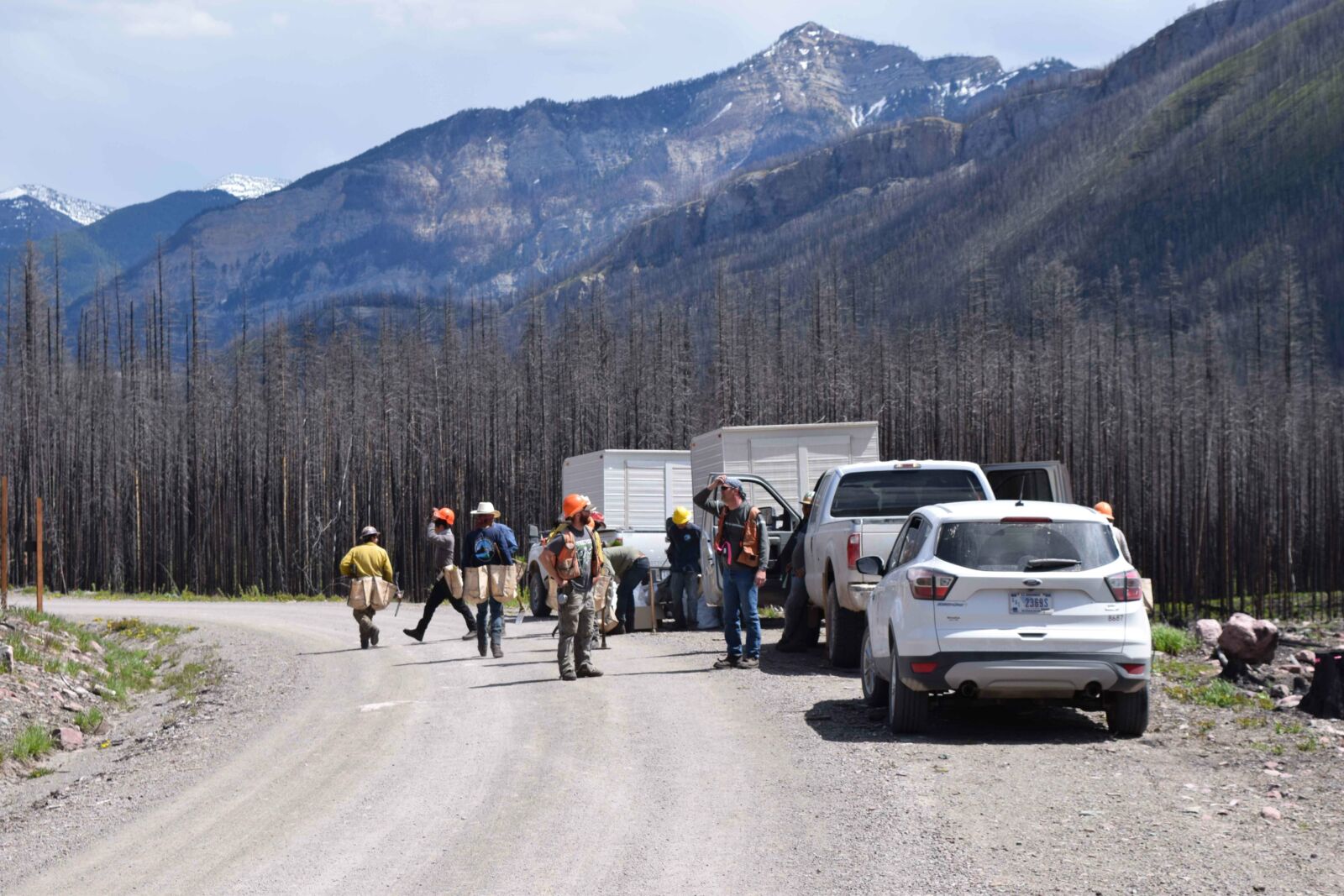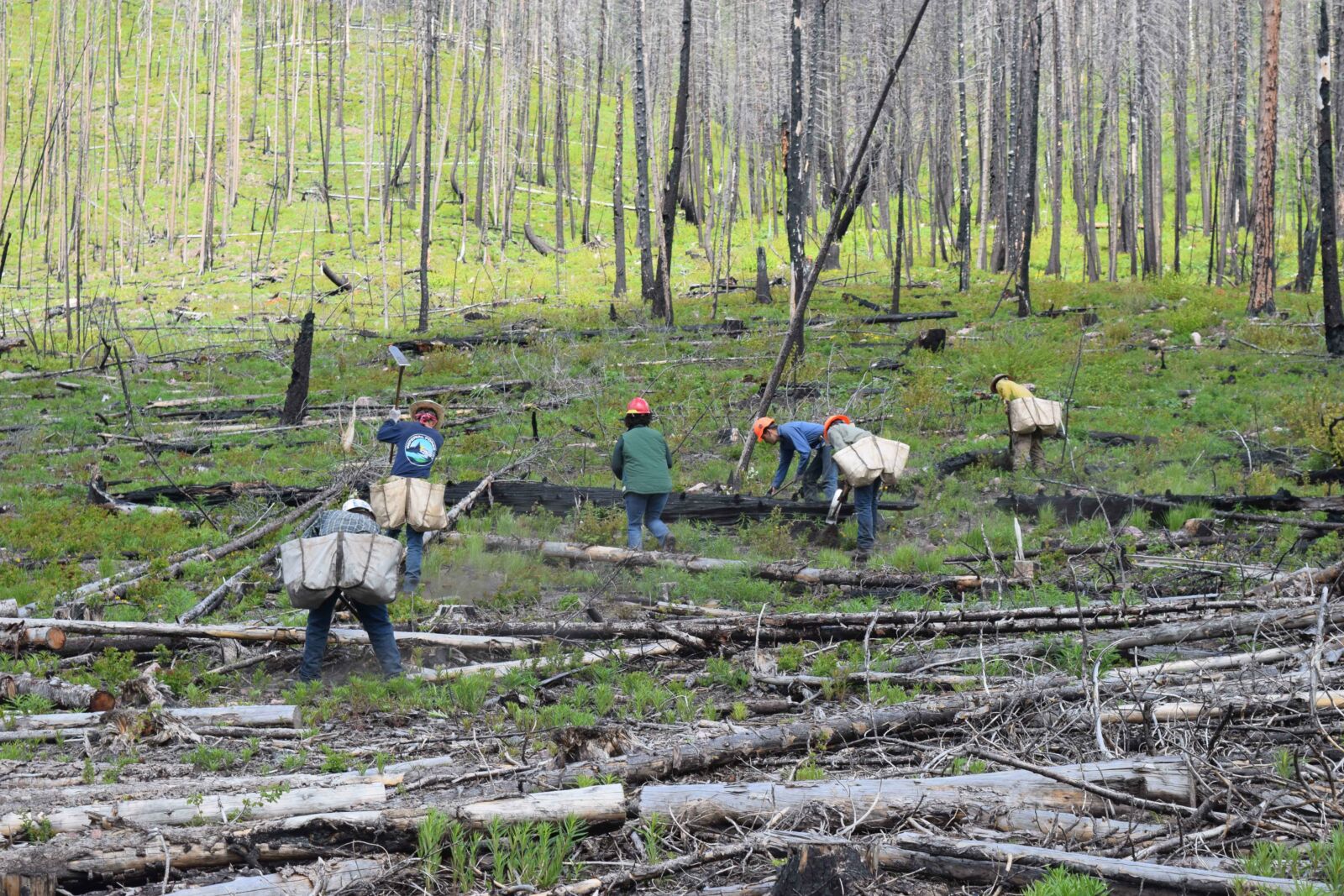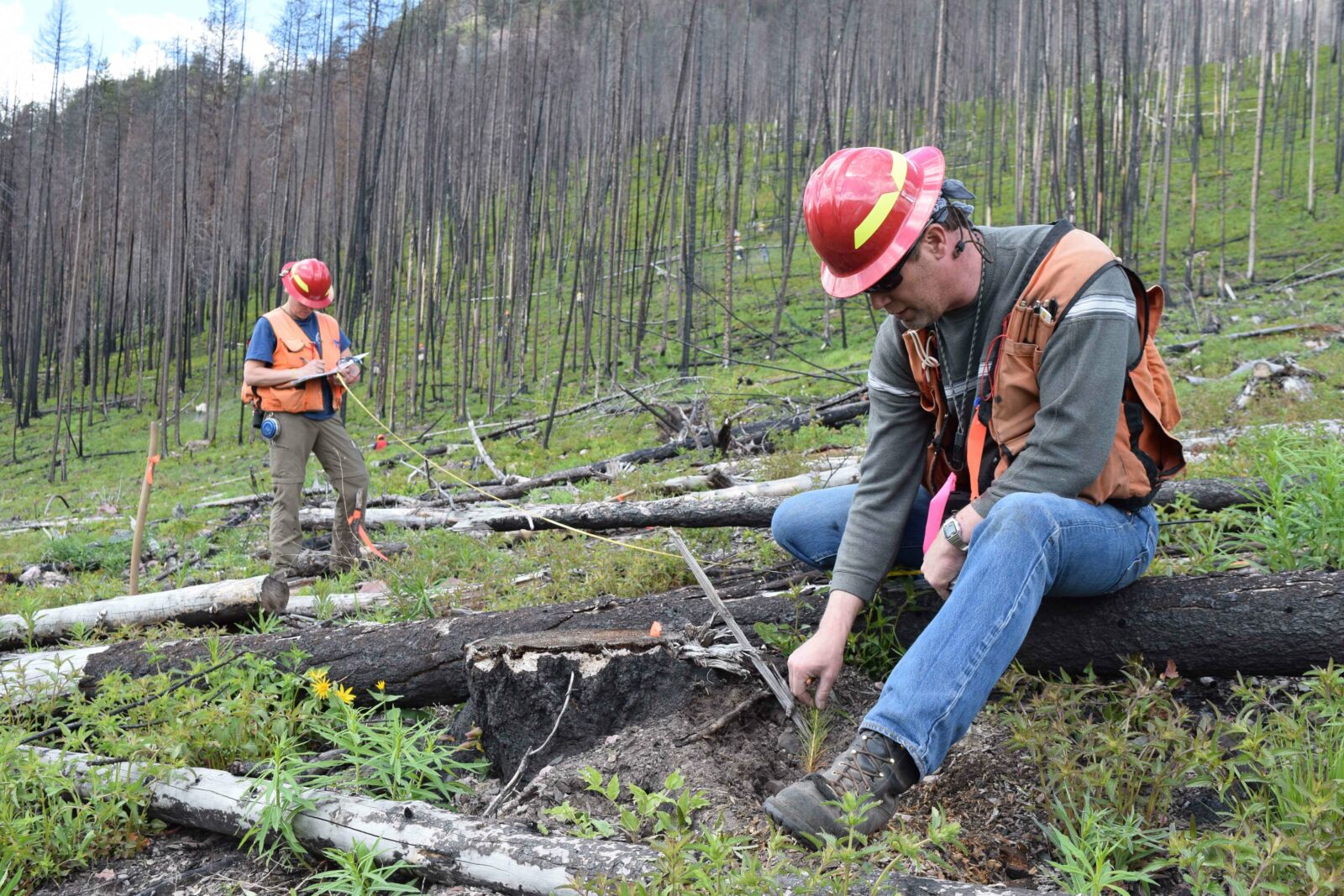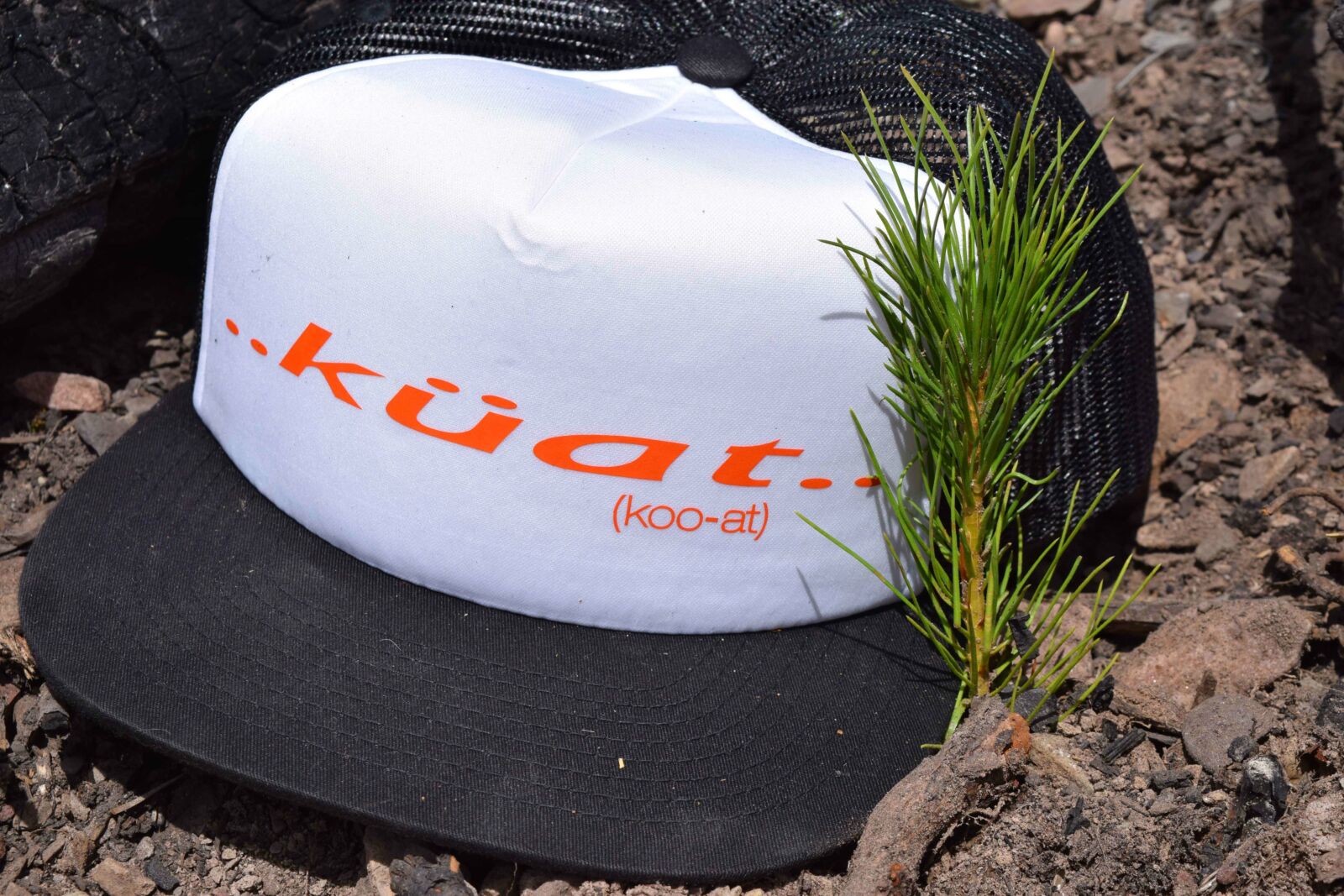Even though I work every day to restore our National Forests, there are precious few opportunities to visit the forest and witness the projects we support. That’s why, when offered to visit the Flathead National Forest to see an NFF-funded tree planting project this past May, I jumped at the opportunity.
Although the Flathead National Forest begins just an hour and half north of Missoula, Montana, it took an impressive five hours to reach the remote planting location from the NFF’s Missoula office. Departing the paved roads in Columbia Falls, Montana, I began the final two hours of the drive that winds its way along Hungry Horse Reservoir toward the Spotted Bear Ranger District. I was treated to expansive views of the mountains within the Bob Marshall Wilderness Complex, as well as views of the southern edge of Glacier National Park. Arriving at the Spotted Bear Ranger Station as dusk fell, I settled in for the night and prepared for a day in the field.

Planting crews stage in preparation for a day of planting the Bear Creek Fire.
In the morning I met with Karl Anderson, Melissa Jenkins and Jeannette Turk from the Flathead National Forest. We drove another 15 long miles up a dirt road to arrive at the actual planting site. Overlooking a tributary to the South Fork of the Flathead River, the planting area was situated on a sloping hillside that burned during the 2015 Bear Creek Fire.
These areas, Anderson explains, will continue to get warmer and warmer with climate change. Thus, the objective of this project was to establish ponderosa pine, a more climate resilient and fire resistant species than lodgepole pine.

A professional planting crew hard at work replanting the Bear Creek Fire on the Flathead National Forest.
While a professional planting crew spread across the hillsides, carefully digging and placing young ponderosa pine trees into the ground, Anderson and Jenkins explained the planting and monitoring process.
Young seedlings, Anderson explains, are planted at a density of about 200 trees per acre. Each seedling is placed in a “microsite” that provides shade from direct sunlight and increases its chances for survival. After the project area is planted by the professional planting crew, the Forest Service evaluates their work.
Anderson and Jenkins set up random “sampling plots” that are 1/50th of an acre in size. Within these sampling plots, they count the number of seedlings and gauge the quality of the plantings, ensuring the best possible survival rates. As the days wears on, I’m increasingly aware of just how much research and thought that the U.S. Forest Service puts into reforestation projects.

Anderson and technicians measure out a sampling plot to check quality control of planting efforts.
As the planting crew packed up and we walked back to our vehicles, Anderson mentions how critical partnerships are for supporting reforestation.
“There’s a significant reforestation need across our forest. Having partnerships with groups like the National Forest Foundation allow us to advance our work across the landscape.” And just as the U.S. Forest Service is grateful to the NFF, we here at the NFF are incredibly grateful for our partners at Kuat Racks for supporting this particular project. Through their Future Forest Initiative, Kuat and the NFF have planted 132,500 trees over the last three years.

Many thanks to Kuat for their support of this project.
As I pack up from a day in the field and begin the journey back from Missoula, I feel grateful. I’m grateful not only for a day spent in the field, but grateful for the partnerships that allow this great work to happen.
Click here to donate to plant trees now.

